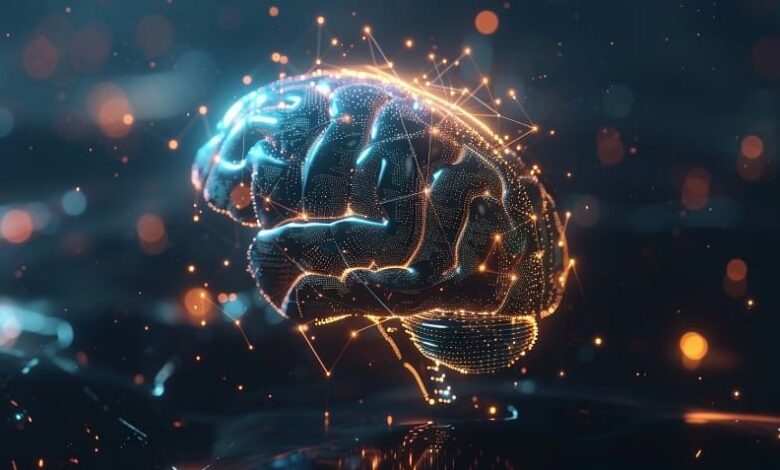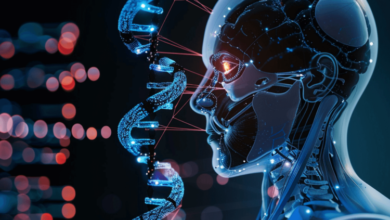Exploring Retrieval Augmented Generation: Unlock AI’s Future!

Retrieval-Augmented Generation (RAG) marks a significant evolution in natural language processing (NLP) models, bridging the gap between generative and retrieval-based approaches. Let’s delve into its evolution and core principles to understand its significance.
Evolution of RAG
- Generative Models: Initially, NLP models predominantly focused on generative approaches like GPT (Generative Pre-trained Transformer) models. These models generate text based on learned patterns from large corpora of text data without explicitly accessing external knowledge sources.
- Retrieval Models: Meanwhile, retrieval-based models like BM25, TF-IDF, and BERT (in its application as a retriever) emerged. These models retrieve relevant information from a predefined corpus or knowledge base to answer queries or generate responses. While effectively accessing factual information, they lack generative models’ creative potential and coherence.
- Hybrid Approaches: The limitations of purely generative or purely retrieval-based models led to the development of hybrid approaches. These models combine the strengths of both paradigms, aiming to generate coherent and contextually relevant responses by leveraging external knowledge sources.
What Is Retrieval-Augmented Generation?
Retrieval-Augmented Generation (RAG) represents a novel paradigm in NLP that integrates generative models with retrieval-based techniques. RAG models incorporate a retriever component, which retrieves relevant passages from a large corpus or knowledge base, and a generator component, which generates text conditioned on both the input query and retrieved passages. Combining these components allows RAG models to produce more informed, coherent, and contextually relevant responses than traditional generative models.
Importance of Retrieval-Augmented Generation:
- Enhanced Contextual Understanding: By incorporating information from external sources, RAG models better understand the context, enabling them to generate more accurate and contextually relevant responses.
- Improved Factual Accuracy: RAG models can access factual information by leveraging external knowledge sources, leading to more accurate and informative responses.
- Increased Coherence: Integrating retrieval-based techniques helps RAG models maintain coherence in the generated text by grounding it in relevant context from the retrieved passages.
- Expanded Applications: RAG models find applications in various NLP tasks such as question answering, dialogue generation, summarization, and more, where access to external knowledge enhances performance.
Benefits of RAG
Retrieval-Augmented Generation (RAG) offers several key benefits compared to traditional generative models or retrieval-based models:
- Contextual Relevance: RAG models leverage external knowledge sources to provide contextually relevant responses. RAG models generate text grounded in real-world information by retrieving and incorporating relevant passages from a large corpus or knowledge base, leading to more accurate and contextually appropriate outputs.
- Improved Factual Accuracy: RAG models can incorporate factual information into their responses by accessing external knowledge sources during the generation process. This results in more accurate and factually correct outputs, making them suitable for applications where factual accuracy is crucial, such as question answering or information retrieval.
- Enhanced Coherence: Integrating retrieval-based techniques helps RAG models maintain coherence in the generated text by grounding it in relevant context from the retrieved passages. This leads to more coherent and logically structured outputs than purely generative models, which may struggle with maintaining coherence over longer text passages.
- Flexible Generation: RAG models offer a balance between creativity and factual accuracy. Combining generative and retrieval-based approaches can generate informative and creative responses, making them suitable for a wide range of applications, including dialogue generation, summarization, and content creation.
- Adaptability: RAG models can be fine-tuned and adapted to specific domains or tasks by training them on domain-specific knowledge bases or corpora. This allows them to specialize in particular domains and produce more tailored and relevant responses for specific applications or industries.
- Reduced Bias: By incorporating information from diverse sources during retrieval, RAG models can help mitigate biases in the training data. This can lead to more balanced and unbiased outputs, essential for applications where fairness and equity are paramount.
How Does Retrieval-Augmented Generation Work?
Retrieval-Augmented Generation (RAG) combines elements of generative and retrieval-based models to generate contextually relevant and factually accurate text. Here’s a general overview of how RAG works:
Retrieval Component
- Query Processing: RAG begins by processing the input query or prompt. This query serves as a guide for retrieving relevant information from a large corpus or knowledge base.
- Retrieval: The model employs a retrieval mechanism to search for passages or documents from the knowledge base that are relevant to the input query. This retrieval step typically involves techniques such as TF-IDF, BM25, or dense retrievers like DPR (Dense Passage Retrieval).
Generation Component
- Contextual Encoding: Once the relevant passages are retrieved, they are encoded into a fixed-length representation using techniques like pre-trained language encoders (e.g., BERT, RoBERTa).
- Conditional Generation: The retrieved representations, along with the original query, serve as conditioning information for the generative component of the model. The generative model, often based on architectures like GPT (Generative Pre-trained Transformer), generates text conditioned on both the input query and the retrieved passages.
Integration
- Concatenation or Attention: The retrieved representations are integrated into the generative process, typically by concatenating them with the input embeddings or applying attention mechanisms to selectively attend to relevant parts of the retrieved passages during generation.
Text Generation
- Decoding: The model generates text based on the combined input, producing a response grounded in the original query and the retrieved knowledge.
Evaluation and Refinement
- Scoring and Ranking: The generated response can be scored or ranked based on various criteria, such as relevance to the query, coherence, and factual accuracy. This helps ensure that the generated text meets the desired quality standards.
- Fine-tuning: RAG models can be fine-tuned on specific datasets or domains to improve performance for particular tasks or applications. Fine-tuning allows the model to adapt to the specific characteristics of the target domain and generate more tailored responses.
Difference Between RAG and Semantic Search
|
Aspect |
Retrieval-Augmented Generation (RAG) |
Semantic Search |
|
Primary Objective |
Generate text responses |
Retrieve relevant documents/text |
|
Input |
Query or prompt |
Query or search terms |
|
Output |
Text response |
Relevant documents/text snippets |
|
Model Architecture |
Combination of generative and retrieval components |
Typically based on retrieval models (e.g., TF-IDF, BM25), sometimes augmented with semantic understanding (e.g., word embeddings) |
|
Generation Process |
Generates text conditioned on both input query and retrieved passages |
Does not generate text; returns relevant documents or text snippets based on similarity to the query |
|
Contextual Understanding |
Incorporates external knowledge sources to generate contextually relevant responses |
Focuses on understanding the semantic meaning of the query terms and retrieving relevant documents based on similarity |
|
Factual Accuracy |
Can leverage external knowledge sources to ensure factual accuracy in generated responses |
Relies on the relevance and accuracy of documents retrieved based on the semantic similarity of the query |
|
Applications |
Answering questions, creating dialogue, summarizing content, etc. |
Information retrieval, document search, content recommendation, etc. |
RAG Use Cases
Retrieval-Augmented Generation (RAG) finds application in various natural language processing tasks where generating contextually relevant and factually accurate text is essential. Some prominent use cases of RAG include:
Question Answering
RAG models can generate informative and accurate responses to natural language questions by leveraging external knowledge sources to provide contextually relevant answers.
Dialogue Generation
In conversational AI systems, RAG can generate more engaging and contextually relevant responses by incorporating external knowledge during the generation process.
Summarization
RAG can generate concise and informative summaries by synthesizing information from retrieved passages and incorporating it into the generated summary.
Content Creation
RAG models can assist content creators by generating text grounded in relevant information retrieved from external sources, helping streamline the content creation process.
Knowledge Base Enrichment
RAG can enrich existing knowledge bases by generating additional contextually relevant information based on the content of the knowledge base itself.
Document Expansion
RAG can expand existing documents or articles by generating additional content based on related information from external sources.
Information Retrieval
RAG can enhance traditional information retrieval systems by generating more informative and contextually relevant summaries or snippets for retrieved documents.
Language Translation
RAG models can be applied to language translation tasks by generating translations that are not only accurate but also contextually appropriate based on retrieved information.
Content Personalization
RAG can personalize user content by generating text tailored to their interests and preferences, leveraging external knowledge to provide relevant recommendations or information.
Decision Support Systems
RAG can assist decision-makers by generating contextually relevant insights and recommendations based on retrieved information, helping to inform decision-making processes.
Elevate your career and harness the power of AI with our Generative AI for Business Transformation course. Don’t miss this opportunity to transform your understanding of generative AI and its applications in the business world.
Future of Retrieval-Augmented Generation
The future of Retrieval-Augmented Generation (RAG) holds immense promise as researchers continue to explore and innovate in natural language processing. As technology advances and computing power increases, we expect RAG models to become more sophisticated, capable of handling larger knowledge bases and generating even more contextually relevant and accurate responses. One direction for future development involves enhancing the retrieval component of RAG models, enabling them to access and integrate information from a broader range of sources, including structured databases, multimedia content, and real-time data streams.
Additionally, advancements in machine learning techniques, such as self-supervised learning and continual learning, may enable RAG models to adapt and improve over time, refining their understanding of context and expanding their capabilities across diverse domains and languages. Moreover, as ethical considerations gain prominence in AI research, future developments in RAG will likely focus on addressing bias, fairness, and transparency issues, ensuring that these models are effective, trustworthy, and accountable in their decision-making processes.
Conclusion
The future of RAG promises to revolutionize how we interact with and harness the power of natural language, opening up new possibilities for communication, knowledge discovery, and intelligent assistance. Unlock the potential of Generative AI for unprecedented business transformation with Simplilearn’s cutting-edge course! Dive into artificial intelligence, where creativity meets innovation, and learn how to harness the power of Generative AI to revolutionize your business processes. Whether in marketing, product development, or customer service, this course equips you with the knowledge and skills to leverage Generative AI for unparalleled growth and success.
FAQs
1. What is an RAG system in AI?
A RAG system in AI, or the Retrieval-Augmented Generation system, combines generative models with retrieval-based techniques to generate text responses grounded in external knowledge sources.
2. What makes retrieval augmented generation unique?
What makes retrieval augmented generation unique is its ability to generate contextually relevant and factually accurate text by integrating information retrieved from external sources into the generation process.
3. Is retrieval augmented generation being used in chatbots?
Yes, retrieval augmented generation is being used in chatbots to enhance their ability to generate more informative and contextually relevant responses to user queries.
4. How do companies implement retrieval augmented generation?
Companies implement retrieval augmented generation by integrating generative and retrieval-based components into their AI systems, training them on relevant data, and fine-tuning them for specific tasks or domains.
5. What challenges come with retrieval augmented generation?
Challenges with retrieval augmented generation include ensuring the accuracy and relevance of retrieved information, managing the computational resources required for large-scale retrieval, and addressing potential biases in the retrieved data.



